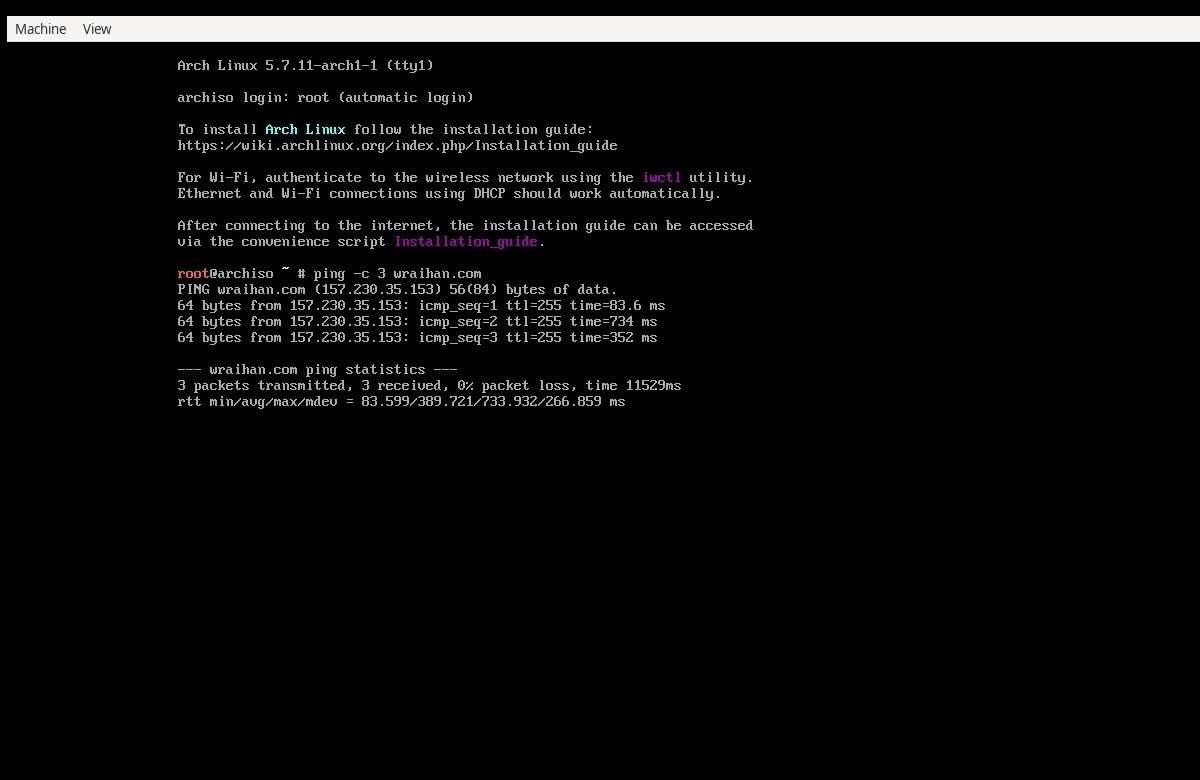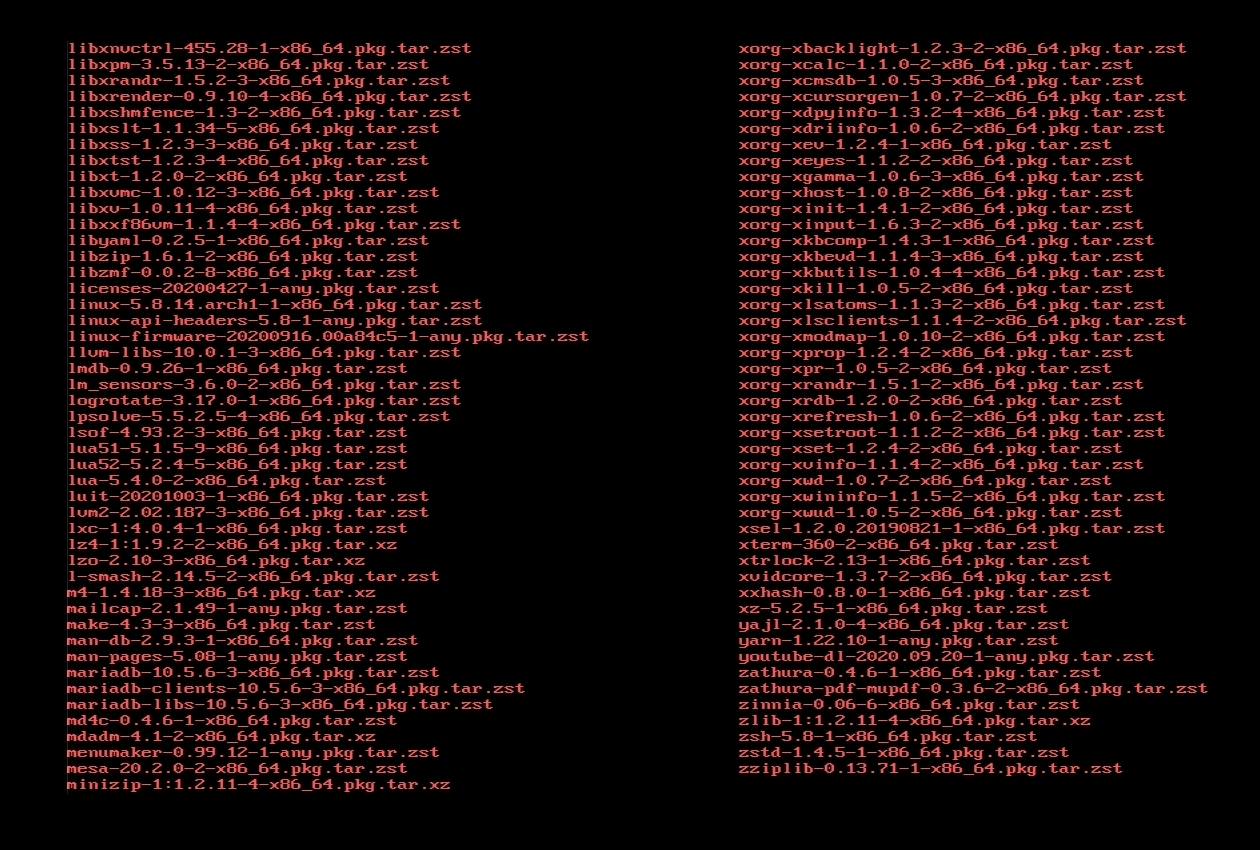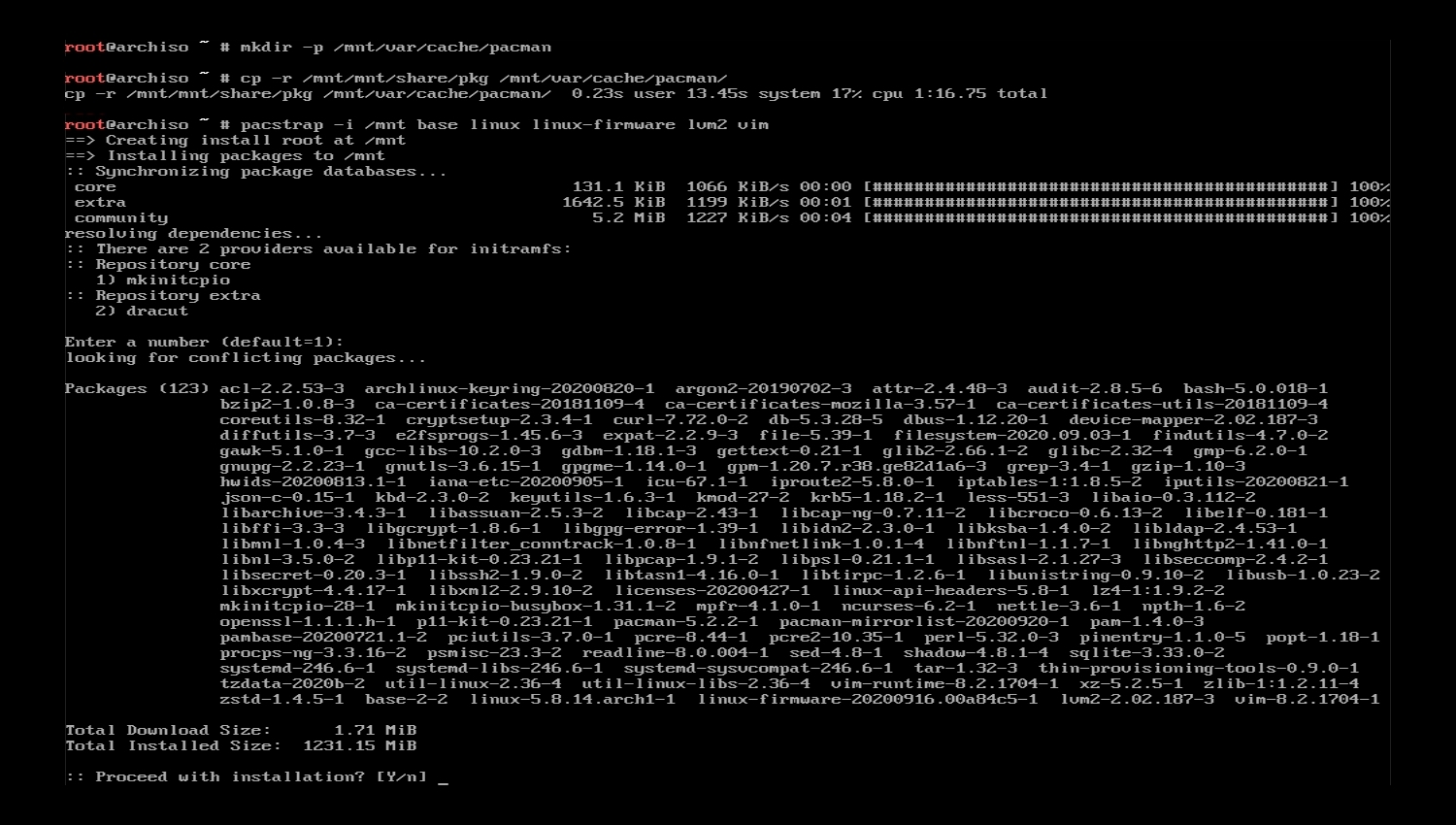I honestly am not in the state where I can write a neat introduction for this specific action so I will just proceed to the steps I took for having this successfully done.
ovmf by following the instructions specified on the archwiki;archiso on QEMU.qemu-system-x86_64 -enable-kvm -m 2G \
-device intel-hda -device hda-duplex -device virtio-balloon \
-drive if=pflash,format=raw,readonly=on,file=/usr/share/edk2-ovmf/x64/OVMF_CODE.fd \
-drive if=pflash,format=raw,file=/path-to-my_uefi_vars.fd \
-drive file=/path-to-linux.img,if=virtio \
-virtfs local,path=/path-to-shared-folder,mount_tag=hostshare,security_model=none,id=fsdev0 \
-cdrom /path-to-archlinux-x86_64.iso -boot dUEFI support as instructed in the archwiki; &Virtio loaded to enable its block device as well as folder/file sharing from Host OS to Guest OS.ESP partition as well as a Linux LVM partition with gdisk. Both were formatted as FAT32 and EXT4 respectively;

lsblk to see the available block devices. Obviously the last line is the virtual disk available which was created before loading the VM.gdisk (my favorite table partition app) of that particular block device intended for the VM, printed the list of partition which surely is empty and created a new partition for ESP which is required for UEFI bootloader.LVM partition on /mnt, created a mount point for a shared folder and mounted it through the 'hostshare' mount_tag (I did this to copy all the base packages installed on Host OS into the Guest OS so that I no longer needed to wait for the packages to be downloaded) and continued with the general installation.Part of these steps may be seen in the images below:
ls command for the mounted shared partition which contain the packages already installed on my host OS.
"You could omit the installation of the firmware package when installing in a virtual machine or container."
lvm2' needs to be added to 'HOOKS' line in /etc/mkinitcpio.conf file before running mkinitcpio:-grub (grub2) as well as efibootmgr and add 'lvm' to a line where it says 'GRUB_PRELOAD_MODULES' in /etc/default/grub file. Next, I mounted the ESP partition on /mnt/boot and run the following commands:-grub-install --target=x86_64-efi --efi-directory=/mnt/boot --boot-directory=/mnt/boot --bootloader-id=GRUB
grub-mkconfig -o /mnt/boot/grub/grub.cfg